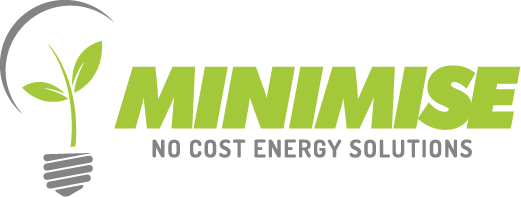Do you think inflation is bad?
Utility rates are outpacing inflation. And that is scary! You can impact your inflationary cost increases by tightening your belts. BUT large entities (Municipalities, Universities, Schools, Hospitals, and large private entities) cannot do the same. You need to keep the lights on literally and figuratively.
In the US, average utility rates are increased by almost 10% from 2021 to 2022. And it is getting worse. In several states the rate increases are astronomical. In Florida, utilities show increases of 18.7% FP&L) and 20.4% (Gulf Power). In California, PG&E, SCE, and SDGE are projecting increases by 2030 to 40%, 20%, and 70% respectively. And the reality is the actuals will be much worse.
- Natural gas costs have more than doubled from $2.32/MMBTU to $4.98/MMBTU
- Costs of transmission infrastructure are being passed along to the customer
- Financial impact of natural disasters (e.g., wildfires in CA and storms in TX)
- Litigation waged against utilities
- Recouping of lost revenues due to Covid-19

- Natural gas costs have more than doubled from $2.32/MMBTU to $4.98/MMBTU
- Costs of transmission infrastructure are being passed along to the customer
- Financial impact of natural disasters (e.g., wildfires in CA and storms in TX)
- Litigation waged against utilities
- Recouping of lost revenues due to Covid-19
Additionally, the impact of clean energy initiatives is having a short-term financial impact. Like it or not, coal and carbon-based fuels are relatively cheap in the US to produce. Renewables (solar, wind, geothermal, biomass, etc.) though trending in the right direction in terms of cost/benefit are still struggling against subsidized gas, oil, and coal. In fact, states that are shuttering coal plants are seeing 30% higher utility rates.
There is a mistaken perception that the deregulation of utility companies resulted in a free market. If indeed it was a true free market, utility companies would compete resulting in lower rates to end-users. But this is not the case. Utility companies given their quasi-public-private status have been able to create an oligopoly where they set rates, negotiate profit margins, and establish a “no-lose” scenario. Even Community Choice Aggregators (CCAs) who seem to provide an alternative to utility companies ultimately purchase their energy from the utility company.
The good news is strategies exist to address the short- and long-term impact of utility escalation. These strategies include:

Reduce your energy consumption through energy efficiency: The impact of optimizing your energy infrastructure cannot be stated strongly enough. Improving your lighting, HVAC, controls, water, and other energy-consuming equipment can easily reduce your energy bills by upwards of 50%.

Produce your own energy via renewables (solar, wind, geothermal, biomass, battery storage): The key to the successful impact of renewables is to first optimize your energy infrastructure to “right-size” your energy load. And only THEN, develop your renewables to that smaller energy footprint. Too many entities overbuilt their solar footprint resulting in increased cost and wasted energy production. When done correctly, you can offset energy needs by upwards of 50%. More importantly, your renewable strategy will result in less dependence on your utility.

Restructure your energy payments to a fixed, predictable schedule: Given the unpredictable nature of escalation rates and the severe impact they can have on your bottom line, it is important to mitigate this uncertainty and negative impact by creating financial structures that result in fixed, certain payments.
- Optimize your energy infrastructure to reduce energy consumption and cost
- Offset dependence on utility companies through the strategic use of renewable energy
- Affix your energy payments to remove uncertainty and mitigate the impact of utility rate escalation
Minimise does so through an innovative set of financial and engineering solutions backed by performance assuring EEaaS technology and following a well-architected process to help our clients address their financial, infrastructure, and sustainability goals.
Minimise has developed the No Capital Outlay Partnership Agreement (NCOPA) funding model that benefits clients by:
- Converting infrastructure waste into currency to fund efficiency/renewable strategies
- Creating positive upfront funding to address priorities
- Mitigating risk through EEaaS technology
- Impacting financials without debt



Minimise does so through an innovative set of financial and engineering solutions backed by performance assuring EEaaS technology and following a well-architected process to help our clients address their financial, infrastructure, and sustainability goals.
Minimise has developed the No Capital Outlay Partnership Agreement (NCOPA) funding model that benefits clients by:
- Converting infrastructure waste into currency to fund efficiency/renewable strategies
- Creating positive upfront funding to address priorities
- Mitigating risk through EEaaS technology
- Impacting financials without debt
Here is an example of Minimise’s impact Minimise on a School District:
- Energy efficiency optimization measures: Minimise investing $9.8M in Lighting, HVAC, Controls, Water improvements
- Energy offset: Solar
- Reduced/Offset annual energy spend by 50% from $1.2M to $600K
- Upfront unrestricted funds: $600K
- Additional O&M budget over term: $1.2M
- Fixed/Structured payment for 20-year term
- Net utility cost reductions: $15M
Additionally, the client benefits from addressing their Sustainability goals through this program:

4,350,084
kWh saved
per year

3,083
metric tons
CO2 avoided

670
passenger
vehicles driven
for one year

371
homes’ energy
for one year

116,842
incandescent
lamps
switched to
LED

CO2,
sequestered
from 3,777
acres of US
forests in one
year
As you can see, the financial, infrastructure and sustainability impact of the Minimise strategic approach is significant. The process to do so is straightforward:
High-level due diligence: Minimise gathers basic information from the client and will perform high-level directional analysis to identify the potential opportunities
Investment Grade Audit (IGA): The client and Minimise agree to perform an in-depth analysis to determine with a high level of granularity the specific scope measures, costs, savings/offsets, financial analyses, Sustainability impact, and funding strategies.
Approval and Funding: Once the scope and associated financials are determined, the client and Minimise move into the execution contract and funding.
Construction: Minimise collaborates with the client and implementation firm on scheduling and coordination of scope construction and delivery
Ongoing Measurement & Verification: Minimise provides ongoing monitoring and reporting of scope via EEaaS for the entirety of the term.
In summary, Minimise has developed a unique approach that will help an organization like yours to proactively address and positively affect your entity’s infrastructure and do so in a way that results in significant energy reduction and financial impact. Most importantly, Minimise will develop a strategy that hedges you against the negative impact of utility escalation.



